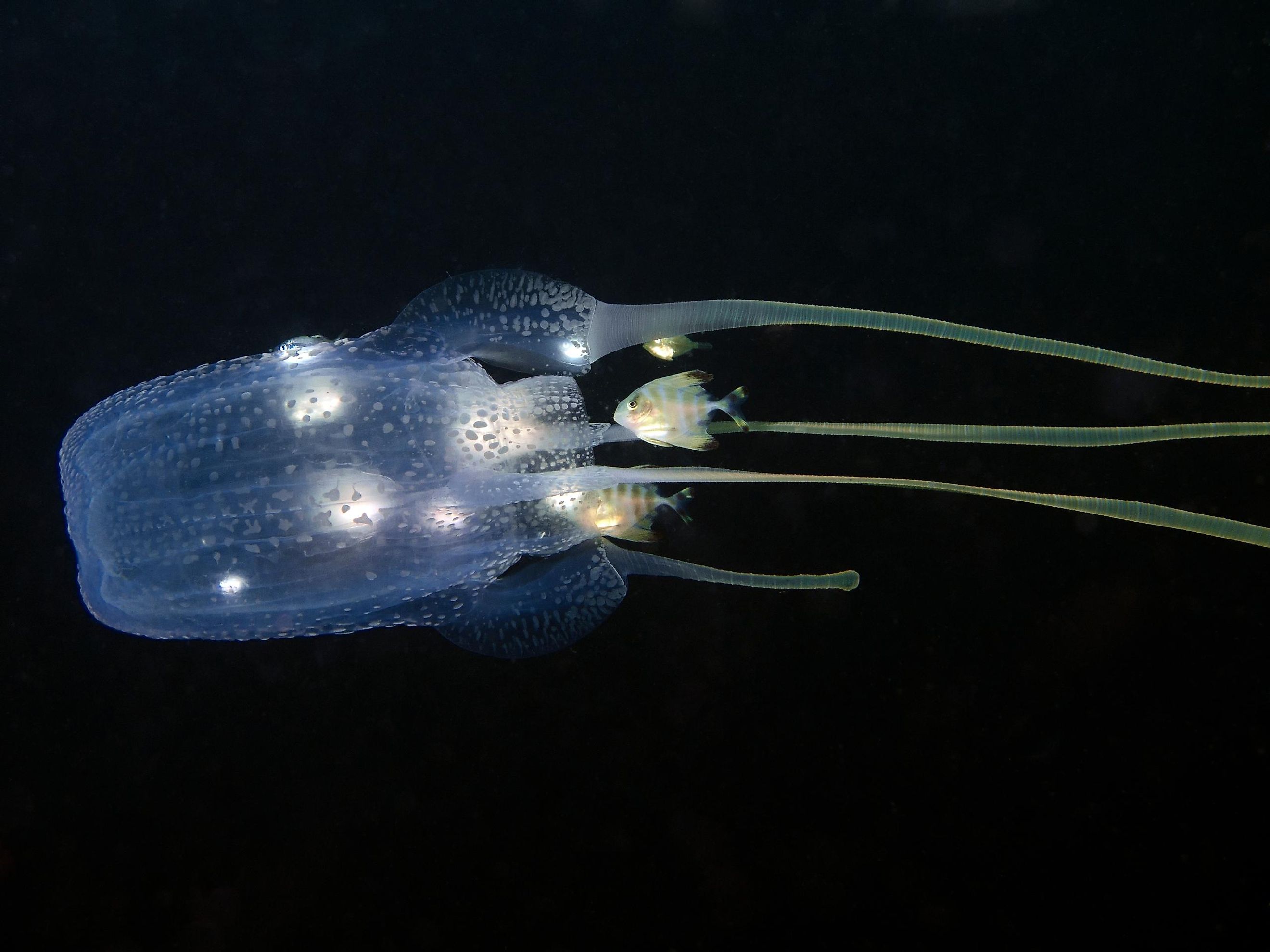
Box Jellyfish
The box jellyfish, which is part of the class Cubozoa, may have a boring name, but it is one of the most feared creatures on the planet. With its box-shaped bell and pale blue color, this distinctive marine species is known for possessing such powerful venom that it can instantly kill prey. When a box jellyfish stings a human, it releases toxins that attack the body, including the heart and nervous system. The venom causes so much pain that victims sometimes go into shock and drown. The shock of intense pain often causes the person to die of heart failure. Those who survive a box jellyfish sting may experience pain for several weeks and may notice scarring where the tentacles touched their skin. Around 50 species of box jellyfish inhabit the oceans, but only a few have venom that can kill humans.
Box Jellyfish Characteristics

The box jellyfish gets its name from its unique cube-shaped bell, which sets it apart from other jellyfish species. The bell diameters can reach up to 30 centimeters in length, and the jellyfish’ tentacles often extend to several meters. These tentacles, armed with venomous cells called cnidocytes, serve to incapacitate and capture prey and protect the jellyfish from predators.

Species
Box jellyfish comprise several species, each holding its own individual characteristics and distribution patterns. Given are two examples:
- Chiropsalmus quadrigatus: Known as the four-sided box jellyfish, this species inhabit the Pacific Ocean and is found mainly off the coast of Japan. Distinguishing it from other box jellyfish, it exhibits four distinct corners on its bell, a feature which has long interested and fascinated scientists.
- Carukia barnesi: Commonly known as the Irukandji jellyfish, this relatively small-sized species poses a larger-than-life threat. It resides in the waters of the Great Barrier Reef and is notorious for causing Irukandji syndrome, which is a condition characterized by severe pain and cramping. Irukandji syndrome can also lead to potentially life-threatening complications.
Habitat
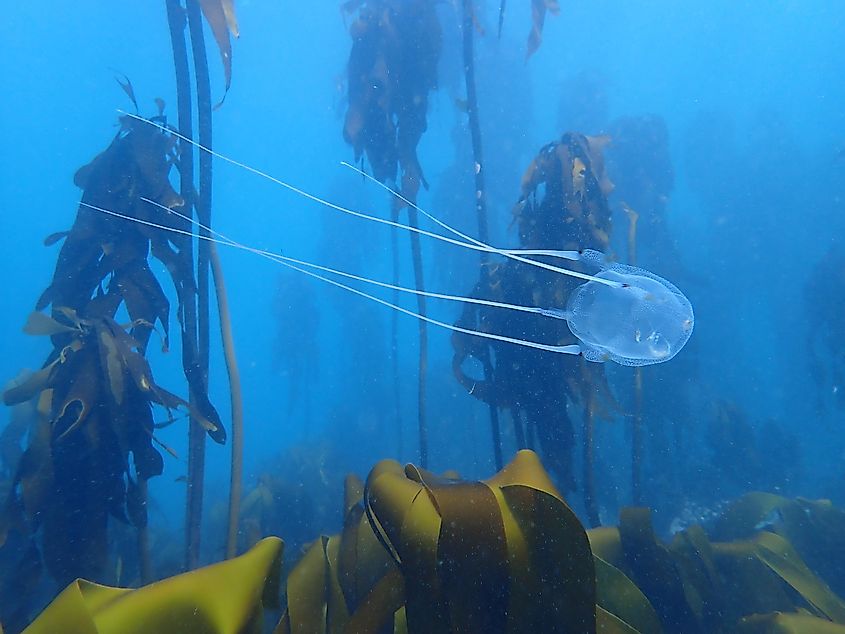
Box jellyfish primarily inhabit the warm coastal waters of the Pacific and Indian Oceans because the species thrive in tropical and even subtropical regions where the water temperature and salinity levels increase their chances of survival. These jellyfish frequent the Great Barrier Reef, as well as the waters off the coast of Thailand, Malaysia, and the Philippines.
Food Habits
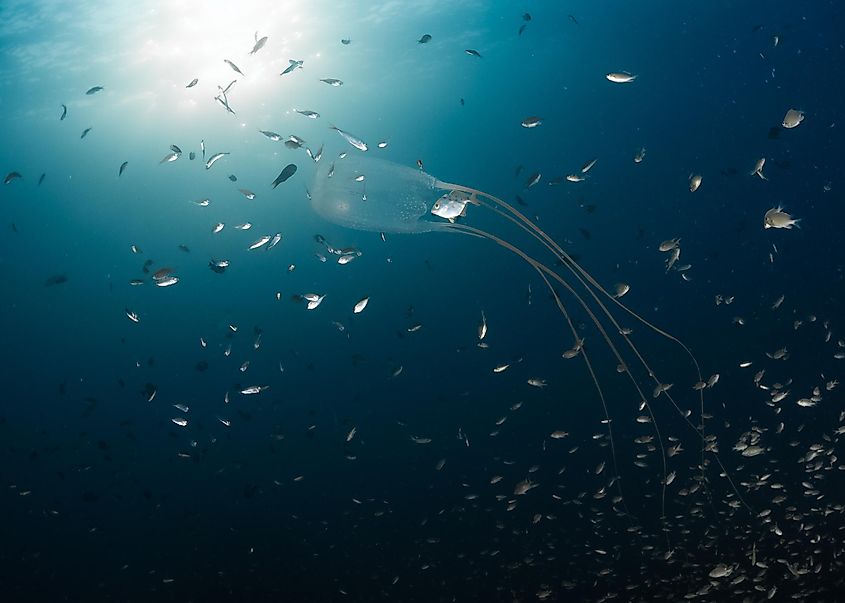
As carnivorous creatures, box jellyfish primarily feed on small fish, shrimp, and other ocean organisms. Their venomous tentacles greatly assist them in feeding because they can effectively paralyze their prey by discharging harpoon-like structures from the cnidocytes, which then inject venom. Once the prey is paralyzed, the jellyfish brings it to its mouth to eat.
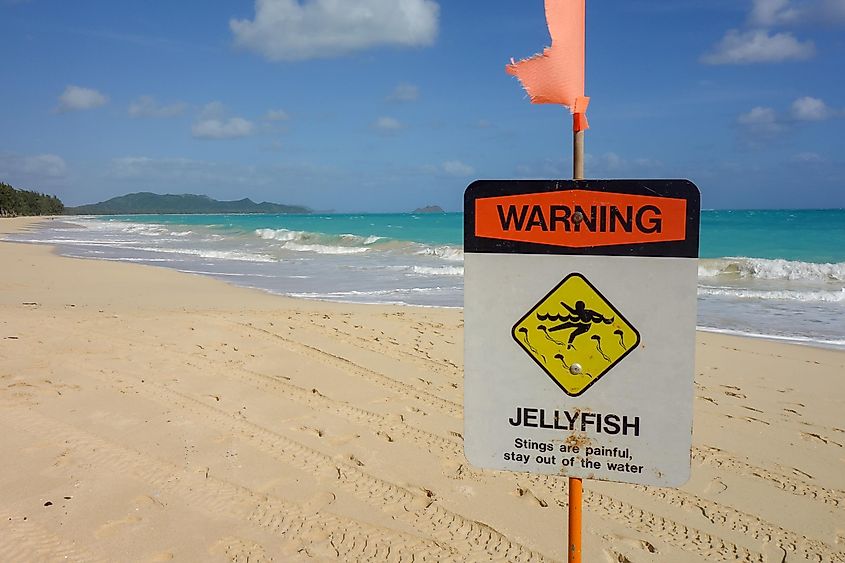
Reproduction
The box jellyfish reproduction cycle involves sexual and asexual phases. During the sexual phase, male jellyfish release sperm into the water, which is captured by the arms of female jellyfish. After being fertilized, the eggs develop into larvae, settling on the seabed and transforming into polyps. The polyps reproduce asexually and generate colonies of genetically identical adult jellyfish, also known as medusae.
Ecological Significance
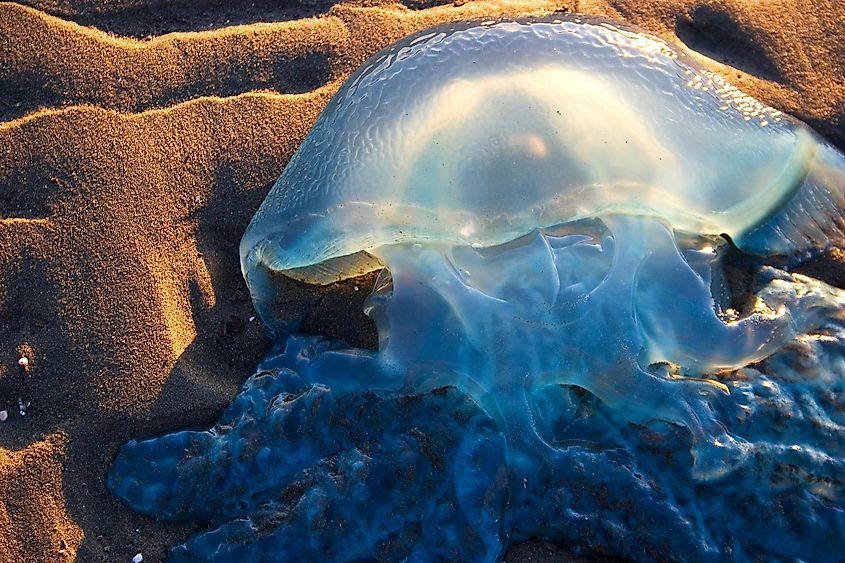
While box jellyfish may instill fear due to their extremely venomous nature, they play a crucial role in marine ecosystems. They help regulate fish and shrimp populations as natural predators and thereby balance the ecosystem. When jellyfish consume their prey, they also release several nutrients through excretion and decomposition, effectively contributing to nutrient cycling in the ocean. This vital process ensures the productivity and health of marine ecosystems.
Box jellyfish populations also serve as alarms or early indicators when it comes to environmental changes and an unhealthy ecosystem. Observing population shifts and distribution patterns provides valuable insights into ecosystem dynamics and potential environmental issues.
Environmental Threats

Sadly, box jellyfish populations also face numerous environmental threats that impact their survival rate. One of the most common threats in modern times is climate change. The rise in ocean temperatures and alterations in marine ecosystems due to climate change can disrupt box jellyfish reproductive patterns, growth rates, and overall survival.
Moreover, the ongoing depletion of fish populations due to overfishing indirectly affects box jellyfish. With fewer fish to prey upon, jellyfish populations may increase, causing an imbalance in individual ecosystems. This can have a cascading effect on the existing food chain too.
Another massive problem that box jellyfish encounter every day is masses of pollution that sully the ocean. Coastal development, agricultural runoff, and marine debris all pose a significant threat to box jellyfish. Chemical contaminants and plastic waste can harm or kill them, while nutrient runoff often leads to algal blooms, which create dead zones in the ocean.
The box jellyfish is a captivating, if dangerous, marine species with distinct characteristics that need our protection. Recognizing their importance within marine ecosystems enables us to appreciate their overall role. It underlines the need for sustainable practices to protect these fascinating creatures as well as maintain the delicate balance of our oceans.











